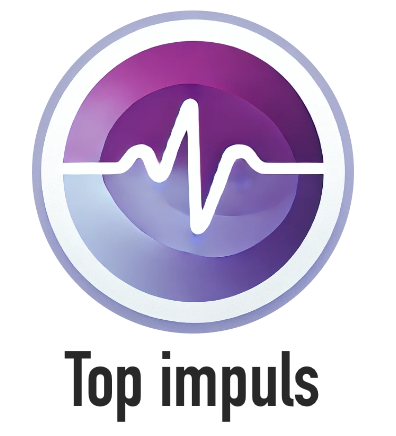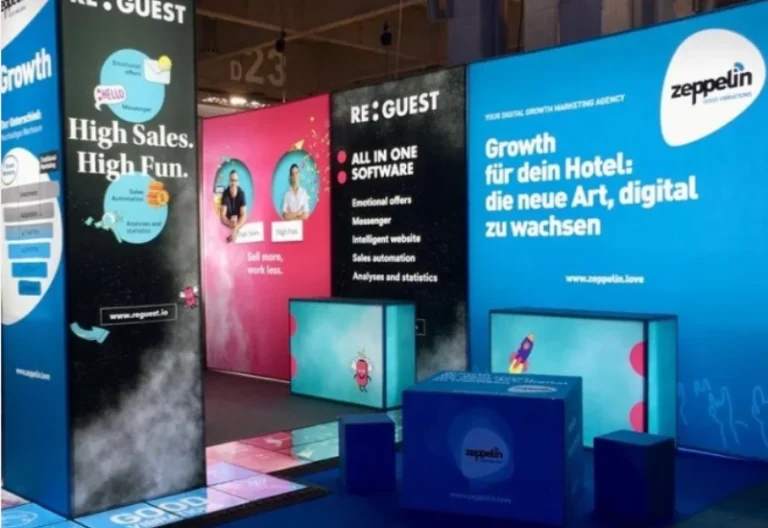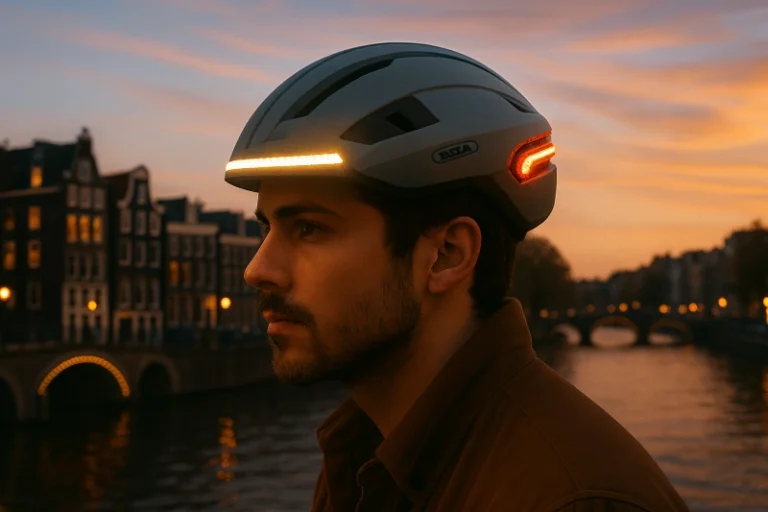In the ever-evolving world of event technology, holographic displays have emerged as a captivating and innovative solution for conference organizers. These cutting-edge visual aids have the power to transform the way information is conveyed, audiences are engaged, and collaborations are fostered. As the use of holographic displays continues to gain momentum in the conference industry, it is crucial to explore the numerous benefits they offer.
Holographic technology has the ability to create three-dimensional, life-like projections that can transport attendees into a realm of immersive learning and engagement. By harnessing the power of holographic displays, conference organizers can elevate the overall experience, captivate their audience, and unlock new possibilities in effective communication and knowledge sharing.
Key Takeaways
- Holographic displays offer a captivating and innovative solution for conference organizers
- These cutting-edge visual aids can transform the way information is conveyed and audiences are engaged
- Holographic technology creates life-like 3D projections that enhance the overall conference experience
- Holographic displays unlock new possibilities in effective communication and knowledge sharing
- Leveraging holographic technology can help conference organizers stay ahead of the curve and deliver memorable events
Understanding Holographic Display Technology in Modern Conferences
As the world of conferences and events evolves, innovative technologies are transforming the way information is presented and shared. One of the most captivating advancements is the rise of holografische projectie, or holographic display technology. This revolutionary approach to 3D-visualisatie is poised to redefine the conference experience, offering a truly immersive and innovatieve technologie for audience engagement.
Basic Principles of Holographic Projection
At the core of holographic displays lies the science of holography, a technique that captures and reproduces the complete light field of an object. By utilizing advanced optical principles and complex algorithms, holographic projection systems can create the illusion of three-dimensional images that appear to float in mid-air, defying the constraints of traditional 2D displays.
Evolution of Conference Display Systems
The evolution of conference display systems has been a gradual yet transformative process. From the humble beginnings of static projector screens to the introduction of interactive whiteboards and video walls, the industry has continuously sought to enhance the visual impact and engagement of presentations. The emergence of holografische projectie marks a significant milestone in this progression, offering a captivating and immersive experience that captivates audiences like never before.
Technical Requirements for Implementation
Implementing holografische projectie in conferences requires a robust technical infrastructure. This includes specialized hardware, such as holographic projectors, high-resolution displays, and advanced 3D imaging sensors. Additionally, the integration of sophisticated software and algorithms is essential to create the seamless illusion of holographic content. Ensuring the reliable and high-quality performance of these innovatieve technologie is crucial for delivering a truly captivating conference experience.
| Key Technical Requirements | Description |
|---|---|
| Holographic Projectors | Specialized projectors capable of generating 3D holographic images through advanced optical techniques. |
| High-Resolution Displays | Displays with exceptional clarity and detail to support the visual fidelity of holographic content. |
| 3D Imaging Sensors | Sensors that capture the depth and spatial information required for holographic rendering. |
| Sophisticated Software | Algorithms and programs that process 3D data and generate the holographic illusion in real-time. |
Wat zijn de voordelen van holografische displays in conferenties?
Holographic displays have emerged as a game-changer in the world of conferences, offering a range of benefits that enhance the overall conference experience. From captivating audience engagement to improved information retention, these cutting-edge technologies are transforming the way we present and collaborate during these important events.
One of the primary advantages of holographic displays in conferences is their ability to create immersive and interactive presentations. By leveraging the power of 3D visualization, speakers can bring their ideas to life, allowing attendees to interact with digital models and visualizations in real-time. This level of engagement not only captivates the audience but also helps them better understand and retain the presented information.
Moreover, holographic displays offer the unique opportunity to enhance remote participation and virtual collaboration. Attendees who are unable to physically attend the conference can still feel fully engaged and immersed in the proceedings, thanks to the seamless integration of holographic technology. This facilitates global collaboration and ensures that knowledge and insights are shared effectively, regardless of geographical barriers.
| Advantages of Holographic Displays in Conferences | Description |
|---|---|
| Immersive and Interactive Presentations | Captivating audience engagement through 3D visualization and real-time interaction with digital models and visualizations. |
| Enhanced Remote Participation and Virtual Collaboration | Enabling remote attendees to feel fully engaged and immersed in the conference proceedings, facilitating global collaboration. |
| Improved Information Retention | The engaging and visually-rich nature of holographic displays enhances attendees’ ability to remember and apply the presented information. |
| Cost-Effective and Sustainable Solutions | Holographic displays can be a more cost-efficient and environmentally-friendly alternative to traditional physical setups, reducing the need for travel and physical resources. |
In addition to these key benefits, holographic displays also offer improved information retention among attendees. The engaging and visually-rich nature of these technologies helps capture the audience’s attention, making it easier for them to remember and apply the presented information long after the conference has ended.
Furthermore, holographic conference solutions can be a more cost-effective and sustainable option compared to traditional physical setups. By reducing the need for travel and physical resources, these technologies can contribute to a more environmentally-friendly conference experience, aligning with the growing focus on sustainability in the event industry.
As the technology continues to evolve, the benefits of holographic displays in conferences are expected to become even more pronounced, transforming the way we engage, collaborate, and share knowledge in these vital professional gatherings.
Enhanced Audience Engagement Through 3D Visualization
Holographic displays have revolutionized the way audiences experience conferences and presentations. By harnessing the power of 3D-visualisatie, these captivating technologies foster a heightened level of aanwezigheidservaring that traditional 2D screens simply cannot match.
Interactive Elements and Real-time Manipulation
Holographic displays go beyond passive viewing; they enable interactieve presentaties where attendees can actively engage with the content. Presenters can manipulate 3D models in real-time, allowing the audience to explore intricate details and gain a deeper understanding of the subject matter.
Impact on Information Retention
Studies have shown that 3D-visualisatie significantly enhances information retention among conference attendees. By immersing the audience in a captivating, three-dimensional experience, holographic displays help attendees better process and remember the presented information, leading to more impactful and memorable presentations.
Creating Memorable Presentation Experiences
Holographic displays have the power to transform ordinary presentations into extraordinary, aanwezigheidservaring-driven experiences. The awe-inspiring visuals and interactive elements captivate the audience, leaving a lasting impression and elevating the overall conference experience.
“Holographic displays have the power to transform ordinary presentations into extraordinary, experience-driven events that captivate the audience and leave a lasting impression.”
Revolutionizing Remote Participation and Virtual Collaboration
The advent of holographic displays has revolutionized the way we approach remote participation and virtuele samenwerking (virtual collaboration) in conferences. This innovative technology is breaking down geographical barriers, providing remote attendees with an aanwezigheidservaring (sense of presence) that was once unimaginable.
One of the key benefits of holographic displays is their ability to create a lifelike, three-dimensional representation of speakers and presenters. This aanwezigheidservaring allows remote participants to feel as if they are physically present in the conference room, fostering a deeper level of engagement and interaction.
Furthermore, holographic displays enable seamless virtuele samenwerking between remote and in-person attendees. Participants can collaborate on projects, share presentations, and even whiteboard together in real-time, thanks to the innovatieve technologie (innovative technology) powering these systems.
| Feature | Benefit |
|---|---|
| Lifelike 3D Representation | Increased aanwezigheidservaring for remote participants |
| Seamless Collaboration | Enables real-time virtuele samenwerking between attendees |
| Reduced Geographical Barriers | Facilitates global participation and knowledge sharing |
By leveraging the power of innovatieve technologie, holographic displays are transforming the way we approach remote participation and collaboration in conferences. This groundbreaking technology is poised to redefine the future of professional communication and knowledge exchange.
Immersive Data Presentation and Analysis
In the dynamic world of modern conferences, holographic displays are revolutionizing the way we present and analyze complex data. These cutting-edge technologies offer a transformative approach to datavisualisatie, allowing presenters to immerse their audience in a three-dimensional, interactive experience that captivates and informs like never before.
Complex Data Visualization Benefits
Holographic displays excel at visualizing intricate datasets in a captivating, easy-to-comprehend manner. By leveraging the power of 3D-visualisatie, presenters can bring numerical information to life, enabling the audience to better understand trends, patterns, and relationships within the data. This enhanced level of visual clarity can lead to deeper insights and more informed decision-making.
Interactive Decision Making Tools
Holographic technology also facilitates the use of innovative interactieve presentaties, allowing conference attendees to actively engage with the data. Presenters can create dynamic, touch-enabled interfaces that enable the audience to manipulate, explore, and interrogate the information in real-time. This interactivity fosters a more collaborative and immersive experience, empowering participants to make more informed decisions.
Real-time Data Integration Capabilities
One of the key advantages of holographic displays is their ability to seamlessly integrate real-time data into presentations. This dynamic integration ensures that the information being showcased is always up-to-date and relevant, allowing conference attendees to make decisions based on the most current insights available. This feature enhances the overall value and impact of the conference experience.
| Benefit | Description |
|---|---|
| Immersive Data Visualization | Holographic displays enable presenters to bring complex data to life in a captivating, three-dimensional format, improving audience understanding and engagement. |
| Interactive Decision-Making | Touch-enabled holographic interfaces allow conference attendees to actively manipulate and explore data, fostering a more collaborative and impactful decision-making process. |
| Real-time Data Integration | Holographic technology facilitates the seamless integration of real-time data into presentations, ensuring that the information shared is always up-to-date and relevant. |
By harnessing the power of holographic displays, conference organizers can elevate the data presentation and analysis experience, empowering their audiences with immersive, interactive, and data-driven insights that drive informed decision-making and lasting impact.
Cost-Efficiency and ROI of Holographic Conference Systems
As the adoption of holografische displays in conferences continues to grow, it’s essential to examine the cost-efficiency and return on investment (ROI) of these innovative technologies. While the initial investment may seem significant, the long-term benefits of implementing holografische displays can far outweigh the upfront costs.
One of the primary advantages of holografische displays is their ability to enhance audience engagement and create a more immersive conference experience. This can lead to increased attendance, improved brand perception, and higher customer satisfaction – all of which can translate into tangible financial benefits for conference organizers.
Additionally, holografische displays can streamline conference logistics and reduce operational expenses. By eliminating the need for physical displays, signage, and other traditional conference materials, organizers can save on shipping, storage, and setup costs. Furthermore, the versatility of holografische displays allows for easy reconfiguration and adaptability, making them a cost-effective solution for a wide range of conference settings and formats.
From the perspective of long-term ROI, holografische displays can provide a significant return on investment. By delivering a more engaging and memorable conference experience, organizers can attract a larger, more loyal audience, ultimately leading to increased revenue through ticket sales, sponsorships, and other revenue streams.
In conclusion, the implementation of holografische displays in conferences offers a compelling case for cost-efficiency and ROI. As innovatieve technologie continues to evolve, the benefits of these cutting-edge display systems will only become more evident, making them an increasingly attractive option for conference organizers seeking to stay ahead of the curve.
Environmental Impact and Sustainability Benefits
As the conference industry continues to embrace innovative technologies like virtuele samenwerking and innovatieve technologie, the adoption of holographic displays in conferenties has emerged as a game-changer. Beyond enhancing audience engagement and revolutionizing remote collaboration, this cutting-edge technology also offers substantial environmental benefits that cannot be overlooked.
Reduced Travel Requirements
One of the most significant environmental advantages of holographic conference systems is their ability to minimize the need for physical travel. By enabling remote participants to join meetings and presentations through immersive, lifelike holograms, these technologies reduce the carbon footprint associated with air travel, ground transportation, and hotel stays. This shift towards more sustainable virtual collaboration can have a profound impact on the conference industry’s environmental impact.
Digital vs. Physical Resource Usage
Compared to traditional conference setups that rely on physical materials, holographic displays offer a more eco-friendly alternative. The digital nature of these systems eliminates the need for printed documents, handouts, and other physical resources, reducing waste and promoting a more sustainable approach. Additionally, the energy consumption of holographic technology is often lower than that of large-scale physical event infrastructure, further contributing to its environmental advantages.
Long-term Environmental Advantages
Beyond the immediate benefits, the adoption of holographic conference systems can have a lasting positive impact on the environment. As this technology becomes more widespread, the cumulative reduction in travel, physical resource usage, and waste can have a significant effect on the overall carbon footprint of the conference industry. Moreover, the continuous technological advancements in this field are likely to lead to even greater energy efficiency and sustainability in the years to come.
| Environmental Metric | Traditional Conferences | Holographic Conferences |
|---|---|---|
| Carbon Footprint | High (due to travel and physical infrastructure) | Low (reduced travel and digital footprint) |
| Resource Consumption | High (physical materials, energy-intensive) | Low (digital, energy-efficient) |
| Waste Generation | High (printed materials, event-related waste) | Low (reduced physical waste) |
Future Trends and Technological Advancements
As the world of conferences continues to evolve, the future of holographic display technology promises to revolutionize the way we experience and engage with information. Innovative developments in holografische projectie and immersieve omgevingen are paving the way for even more innovatieve technologie to be integrated into conference settings.
One exciting trend on the horizon is the advancements in holographic telepresence, allowing remote participants to join conferences as lifelike 3D holograms. This immersive technology will redefine the concept of virtual collaboration, enabling seamless interactions and fostering a deeper sense of presence among attendees, regardless of their physical location.
Furthermore, the integration of artificial intelligence and machine learning into holographic display systems will revolutionize the way data is presented and analyzed. Conferences will leverage these technologies to create dynamic, interactive visualizations that provide real-time insights, empowering attendees to make more informed decisions and drive innovation forward.
Looking ahead, the combination of holografische projectie, augmented reality, and virtual reality is expected to create truly immersieve omgevingen that blur the lines between the physical and digital worlds. Attendees will be able to immerse themselves in captivating 3D experiences, fostering deeper engagement and enhancing the overall conference experience.
As the industry continues to push the boundaries of what’s possible, the future of holographic displays in conferences holds immense potential. By embracing these innovatieve technologie, conference organizers can create unforgettable, transformative experiences that inspire and engage their audiences like never before.
Conclusion
As we’ve explored, holographic displays have the power to revolutionize the way conferences and events are experienced. From enhanced audience engagement through captivating 3D visualizations to revolutionary remote participation and immersive data presentation, this innovative technology offers a multitude of advantages that cannot be ignored.
By embracing holographic displays, conference organizers can create truly memorable and impactful experiences for their attendees. The ability to interact with digital content in a lifelike manner, coupled with the increased information retention and the cost-efficient, sustainable benefits, make holographic displays a game-changing solution for the modern conference landscape.
As we look to the future, the continuous advancements in holographic technology will undoubtedly lead to even more remarkable applications in the conference setting. Organizers who are willing to take the leap and incorporate this innovative approach will undoubtedly reap the rewards of enhanced audience engagement, increased ROI, and a lasting impression that will set their events apart from the rest.








